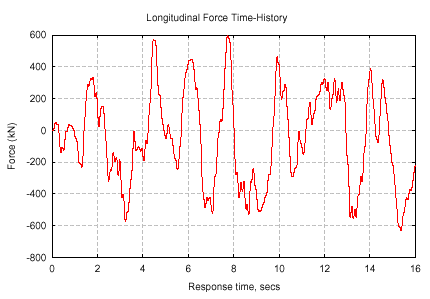Consultancy Services
Seismic design checking of viscous damped
structures to Eurocode EC8
As
Eurocode EC8 becomes more widely used, more third party checking of
proposed designs is increasingly being required. In addition, with the
greater use of viscous dampers to protect structures where seismic
activity is prevalent, accurate FE modelling of the effects of seismic
activity on these particular types of damped structures is essential.
LUSAS Consultancy Services
has many years of experience in checking work of this nature and
has recently completed a seismic design check for a prestressed
reinforced concrete, seismically damped road bridge in the
Mediterranean region.
Modelling
The
1108m long, multi-span bridge comprises a straight and a curved
section, and has an expansion joint midway along its length. In LUSAS,
engineering thick beam elements modelled the reinforced concrete deck,
and these were defined at the respective centroid of each component.
Joint elements modelled the elastomeric bearings and seismic dampers.
Connection between deck and elastomeric bearings and between the top
of the piers and elastomeric bearings was made using nominally stiff
members of negligible mass. These represented rigid links between the
centroids of components and were defined with negligible mass so as
not to contribute to the dynamic behaviour of the bridge. Two
longitudinal dampers were located at the 1st abutment and transverse dampers, located at every 3rd pier along the bridge,
required an additional stiff member arrangement as shown in the
enlarged view. Geometric properties of all bridge components were
calculated using the LUSAS arbitrary section property calculator.
Analysis
Eigenvalue analyses on both bridge
structures found that 225 structural modes were required to meet the
95% mass participation factor value prior to carrying out a subsequent
spectral response analyses using EC8 design spectra. Three nonlinear
transient dynamic analyses were performed on each bridge using
combinations of acceleration time-history dataset pairs in the
longitudinal and transverse directions, as used by the bridge
designers. Good correlation of results was achieved for both the
spectral response and transient dynamics analyses, verifying the
modelling techniques used by the original designers and the viscous
damping techniques used in LUSAS.

|

|
Consultancy Information
|